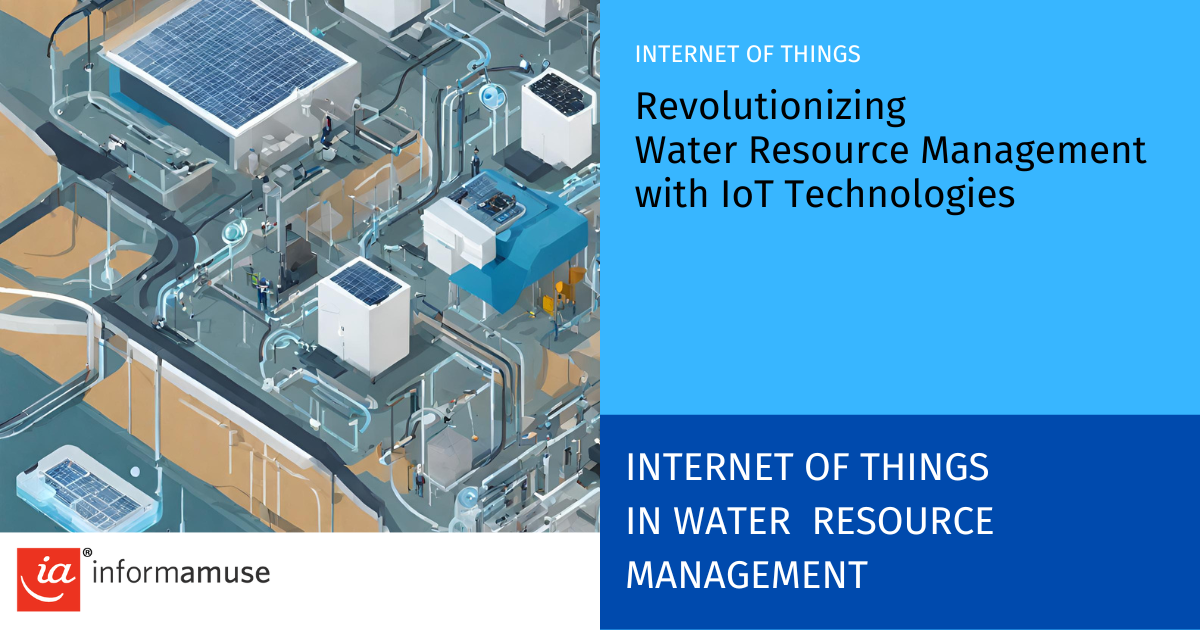
Revolutionizing Water Resource Management with IoT Technologies
In the quest for sustainable resource management, the integration of Internet of Things (IoT) technologies has emerged as a game-changer, particularly in the realm of water resource management. With water scarcity becoming an increasingly pressing global issue, the ability to monitor, analyze, and optimize water usage has never been more critical. IoT solutions offer precisely the tools needed to address these challenges effectively.
1 Real-time Monitoring IoT in Water Resource Management
IoT sensors can be deployed across various water infrastructure components, including pipelines, reservoirs, and treatment plants, enabling real-time monitoring of water quality, flow rates, pressure levels, and leak detection. This continuous data collection empowers water managers to promptly identify anomalies, potential leaks, or contamination events, thus facilitating swift response measures.
2 Data Analytics
The vast amounts of data generated by IoT sensors can be analyzed using advanced analytics techniques such as machine learning and predictive modeling. By harnessing this data, water resource managers can gain valuable insights into consumption patterns, demand fluctuations, and infrastructure performance. These insights enable informed decision-making, allowing for proactive maintenance, resource allocation, and demand forecasting.
3 Optimization and Efficiency
IoT-enabled smart water systems facilitate optimization and efficiency improvements across the entire water supply chain. By dynamically adjusting water distribution based on real-time demand and supply conditions, these systems can minimize losses, reduce energy consumption, and optimize resource utilization. Additionally, IoT-driven automation can streamline operational processes, leading to cost savings and enhanced reliability.
4 Remote Management and Control
IoT platforms enable remote monitoring and control of water infrastructure, providing flexibility and scalability for managing distributed systems. Whether it's adjusting valve settings, regulating pump operations, or implementing demand-based scheduling, remote management capabilities empower water utilities to efficiently manage assets and respond promptly to changing conditions, regardless of geographic location.
5 Environmental Sustainability
By promoting efficient water usage and reducing wastage, IoT technologies play a crucial role in promoting environmental sustainability. By conserving precious water resources and minimizing energy consumption in water treatment and distribution processes, IoT-driven solutions contribute to mitigating the environmental impact of water management practices.
6 Stakeholder Engagement
IoT platforms can also enhance stakeholder engagement by providing transparency and real-time access to water usage data. By empowering consumers with information about their water consumption patterns and associated costs, IoT technologies promote awareness and encourage responsible water usage behaviors among individuals and businesses alike.
In conclusion, the integration of IoT technologies holds immense potential to revolutionize water resource management practices. By providing real-time insights, optimizing operations, and promoting sustainability, IoT-driven solutions offer a holistic approach to addressing the challenges of water scarcity and ensuring the efficient utilization of this vital resource. As we navigate the complexities of water management in an increasingly water-stressed world, embracing IoT innovations will be key to building resilient and sustainable water systems for future generations.
